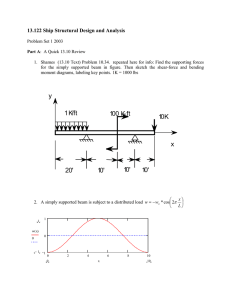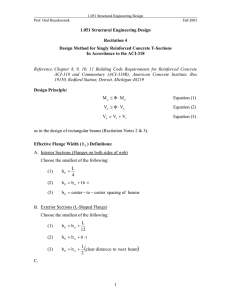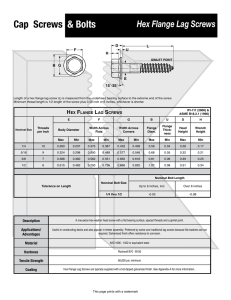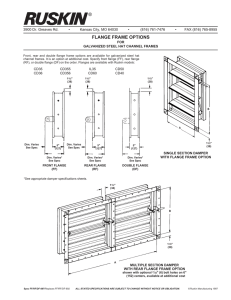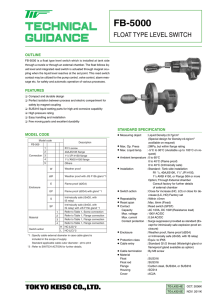Document 13666486
advertisement
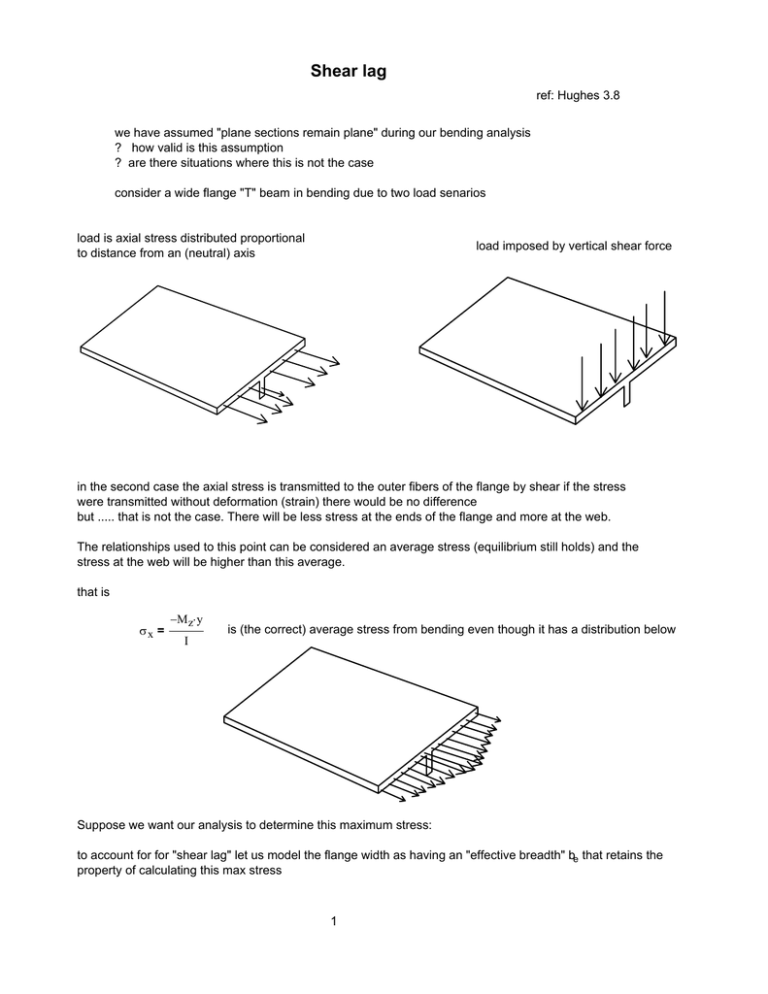
Shear lag ref: Hughes 3.8 we have assumed "plane sections remain plane" during our bending analysis ? how valid is this assumption ? are there situations where this is not the case consider a wide flange "T" beam in bending due to two load senarios load is axial stress distributed proportional to distance from an (neutral) axis load imposed by vertical shear force in the second case the axial stress is transmitted to the outer fibers of the flange by shear if the stress were transmitted without deformation (strain) there would be no difference but ..... that is not the case. There will be less stress at the ends of the flange and more at the web. The relationships used to this point can be considered an average stress (equilibrium still holds) and the stress at the web will be higher than this average. that is σx = −M z⋅y I is (the correct) average stress from bending even though it has a distribution below Suppose we want our analysis to determine this maximum stress: to account for for "shear lag" let us model the flange width as having an "effective breadth" be that retains the property of calculating this max stress 1 we can define this "effective breadth" as the plate width "which, when used in calculating the moment of inertia of the section, will give the correct maximum stress σmax at the junction of web and flange, using simple beam theory". ref: Hughes pg 122 that is: we use a breadth be (< b) than results in a higher stress in the flange σmax from equilbrium: (assuming plate flange of constant thickness t) b b ⌠ be⋅σ max⋅t = t σ x dz ⌡ 0 and ⌠ be⋅σ max = σ x dz ⌡ or .... 0 b ⌠ σ x dz ⌡ be = 0 σ max see figure 3.36 in text derived from Schade "The Effective Breadth Concept in Ship Structure Design": trans. SNAME 61 two points to note: the most important parameter determining effective breadth is Lo the distance between zero bending moments for short beams (Lo ~ b) subject to uniform load 2 be ~ Lo/3
